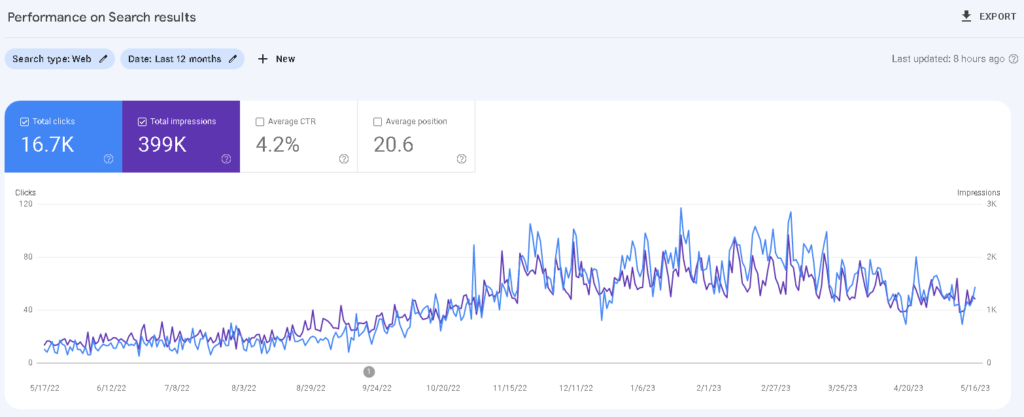On-Page Optimization: Elevate Your Website’s Performance
What is On-Page Optimization? Understanding the Key to SEO Success

In the dynamic world of search engine optimization (SEO), on-page optimization plays a vital role in boosting your website’s visibility and ranking. By optimizing various elements directly on your web pages, you can enhance your website’s relevance, user experience, and search engine friendliness. Let’s delve into the intricacies of on-page optimization and uncover the secrets to achieving online success.
On-Page vs. Off-Page Optimization: Two Sides of the SEO Coin
To grasp the complete SEO landscape, it’s crucial to comprehend the differences between on-page and off-page optimization. While on-page optimization focuses on optimizing elements within your website, such as content, meta tags, and URL structure, off-page optimization deals with external factors like backlinks and social signals. Both aspects are pivotal in building a strong online presence and driving organic traffic to your website.
The Three Pillars of On-Page Optimization
Successful on-page optimization is built on three primary components that lay the foundation for SEO excellence. These components are:
- Keyword Research and Placement: Thoroughly research relevant keywords and strategically incorporate them into your content, headings, and meta tags to improve your website’s visibility and relevance.
- Content Optimization: Craft compelling and informative content that engages your audience, aligns with user intent, and incorporates relevant keywords naturally.
- Technical Optimization: Ensure your website adheres to technical SEO best practices, including optimizing page speed, implementing proper header tags, improving mobile responsiveness, and creating a user-friendly navigation structure.
On-Page Optimization vs. Technical SEO: Decoding the Distinctions
While on-page optimization and technical SEO share common goals, they differ in focus and scope. On-page primarily revolves around optimizing content and other visible elements on your website, ensuring they are relevant and valuable to users and search engines alike. On the other hand, technical SEO focuses on enhancing website infrastructure, improving crawlability, and addressing technical issues that impact search engine visibility. Mastering both aspects is essential for comprehensive SEO success.
Unveiling On-Page Optimization Factors: Examples of SEO Excellence
Successful on-page optimization encompasses a range of factors that contribute to your website’s visibility and ranking. Some examples of key on-page optimization factors include:
- Compelling and engaging content that aligns with user intent and incorporates relevant keywords naturally.
- Well-structured headings (H1, H2, etc.) that provide clear hierarchy and organization to your content.
- Optimized meta tags (title tag, meta description) that entice users and accurately represent your web page’s content.
- User-friendly URL structure that is concise, descriptive, and includes relevant keywords.
- Image optimization with descriptive alt tags and appropriate file sizes for improved page loading speed.
- Mobile responsiveness to ensure a seamless experience for mobile users.
- Easy-to-navigate website structure with logical internal linking.
By optimizing these factors, you can enhance your website’s visibility, user experience, and search engine rankings.
The Importance and Benefits of On-Page Optimization
On-Page optimization holds immense importance in the world of SEO. By investing in on-page optimization, you can:
- Improve your website’s visibility and rankings on search engine results pages (SERPs).
- Enhance user experience, leading to increased engagement, lower bounce rates, and longer visit durations.
- Attract targeted organic traffic by aligning your content with user intent and optimizing for relevant keywords.
- Establish your website as a reliable and authoritative source in your industry.
- Maximize the effectiveness of your digital marketing efforts, including paid advertising and social media campaigns.
On-Site SEO vs. Off-Site SEO: Understanding the Difference
Differentiating between on-site SEO and off-site SEO is essential for a well-rounded optimization strategy. On-site SEO refers to optimizing elements within your website, including on-page optimization factors discussed earlier. In contrast, off-site SEO involves activities outside your website, such as building quality backlinks, social media engagement, and online reputation management. A comprehensive SEO strategy incorporates both on-site and off-site elements to achieve optimal results.
Two Types of SEO: Navigating the SEO Landscape
In the world of SEO, there are two fundamental types of optimization:
- On-Page SEO: This type of optimization focuses on optimizing elements directly on your web pages to improve visibility and relevance.
- Off-Page SEO: This type of optimization revolves around external factors, such as link building and social media engagement, to boost your website’s authority and reputation.
By leveraging both on-page SEO and off-page SEO, you can create a holistic SEO strategy that drives significant results.
Enhancing Your Page Optimization: Tips and Best Practices

Looking to improve your page optimization efforts? Here are some valuable tips:
- Conduct thorough keyword research to identify relevant and high-performing keywords for your industry.
- Create compelling, well-optimized content that aligns with user intent and incorporates targeted keywords naturally.
- Optimize your meta tags (title tag, meta description) to entice users and accurately represent your web page’s content.
- Ensure your website is mobile-friendly and provides a seamless experience across different devices.
- Improve page loading speed by optimizing image sizes, leveraging caching techniques, and reducing unnecessary scripts.
- Implement clear and descriptive headings (H1, H2, etc.) to provide structure and hierarchy to your content.
- Regularly monitor and analyze your website’s performance using tools like Google Analytics to identify areas for improvement.
By following these practices and utilizing the powerful features of Hemailer Pro’s CRM and email marketing software and adding our seo service, you can elevate your website’s performance and achieve remarkable SEO results.
Remember, mastering on-page optimization is an ongoing process that requires continuous monitoring, testing, and adaptation to keep up with evolving search engine algorithms and user expectations. With Hemailer Pro’s multiple-platform CRM and email marketing software, you have the tools and expertise to take your efforts to new heights.
Elevate Your Website’s Performance with On-Page Optimization
When it comes to unlocking the full potential of on-page optimization, Hemailer Pro is your trusted partner. With our multiple-platform CRM and email marketing software that provides comprehensive SEO services, you can supercharge your efforts and achieve remarkable results. Take advantage of our expert guidance, advanced tools, and data-driven strategies to optimize your website for peak performance.
Explore Hemailer Pro’s SEO services, browse our pricing plans, and discover how our expertise can propel your website to the top of search engine rankings.
